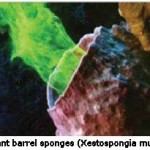
The launch of the European environmental satellite on September 17 from Baikonur Cosmodrome in Kazakhstan will enable National Oceanic and Atmospheric Administration (NOAA) to continue capturing data that feed sophisticated, numerical prediction models used to forecast weather and climate in the United States, according to the agency’s top satellite official.
The Metop-B spacecraft is the second of three polar-orbiting satellites launched by the European Organization for the Exploitation of Meteorological Satellites (EUMETSAT), a NOAA partner.
“This launch is another milestone in a partnership that continues our wide-ranging ability to detect the early signs of severe weather, climate shifts and distress signals from emergency beacons in the U.S., Europe and around the world,” said Mary Kizca, Assistant Administrator for NOAA’s Satellite and Information Service.
In 1998, the two agencies forged a partnership, known as the U.S.–European Initial Joint Polar System, (IJPS), in which NOAA and EUMETSAT agreed to fly sensors on each agency’s respective polar-orbiting satellites that circle the globe 14 times a day, but in different orbits. The Metop satellites fly in the mid-morning orbit, and NOAA’s polar-orbiting environmental satellites, which are the U.S. contribution to the IJPS agreement, circle the Earth in the afternoon orbit.
Together, EUMETSAT’s Metop satellites and NOAA’s polar-orbiting spacecraft provide the majority of global data for numerical weather forecasts, and provide observations that help predict environmental phenomena, including wildfires, volcanic eruptions, snow cover, sea ice, vegetation health, sea surface temperatures, and disaster mitigation. Each agency’s satellites carry similar sets of sensors – some used for forecasting, others for assessing surface conditions.
The Metop satellites include advanced sensors for greater accuracy of atmospheric temperature, water vapor and ozone soundings, which are vital for improving weather forecasts, and special sensors for search and rescue operations. NOAA has comparable sounding capabilities on its next-generation of polar-orbiting satellites, the Joint Polar Satellite System (JPSS).
NOAA provides five of the joint instruments on board the satellites and EUMETSAT developed and provides NOAA with the Microwave Humidity Sounder, which monitors water content in clouds and estimates the rate of precipitation. NASA, on behalf of NOAA, manages the development, testing and integration of the five U.S. instruments that are flying on Metop-B.
NOAA’s mission is to understand and predict changes in the Earth’s environment, from the depths of the ocean to the surface of the sun, and to conserve and manage our coastal and marine resources. For more information, visit www.noaa.gov.
Source: NOAA.
[Photo: The European Organization for the Exploitation of Meteorological Satellites (EUMETSAT) launched its second of three polar-orbiting satellites on September 17. Information from Metop-B will complement data provided by NOAA’s polar-orbiting satellites. © EUMETSAT]














